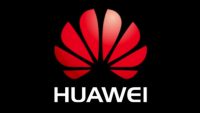At the World AI Conference that opened in Shanghai on Saturday, Huawei emerged as China’s best hope for driving a domestic hardware sector for advanced artificial intelligence workloads. There, Huawei debuted its CloudMatrix 384 AI system, powered by 384 of its high-performance processors, the Ascend 910C GPUs. The setup has drawn favorable comparisons to Nvidia’s flagship supercomputing platform, the GB200 NVL72, a rack-scale solution for on-site AI and HPC tasks. Huawei’s new hardware reportedly drew large crowds to its booth, but the company declined to share detailed comments or live benchmarks, suggesting a tightly controlled public presentation.
“Huawei makes some stunning claims, saying that the CloudMatrix 384 delivers around 300 petaflops of compute performance, surpassing the 180-petaflop limit of Nvidia’s GB200 NVL72 system,” SiliconANGLE reports.

Huawei also claims to beat Nvidia’s product “in terms of memory and bandwidth, although the tradeoff is that it uses significantly more energy to do so.” At 559 kilowatts per hour it consumes nearly four times as much power as the Nvidia system, according to SiliconANGLE.
Nvidia was not exhibiting at the conference, where its top-shelf offerings are subject to federal export controls and cannot be sold. Likewise, the Chinese tech giant has since 2019 been on the U.S. Department of Commerce’s “Entities List,” restricting its ability to sell semiconductors, software and other technologies here.
“It’s unlikely that we’ll see Huawei’s CloudMatrix system come to Europe or North America,” Holger Mueller of Constellation Research told SiliconANGLE, noting that “a key consideration is the software framework, which is different from Nvidia’s.”
“While Nvidia maintains a lead in software ecosystems like CUDA, Huawei’s Ascend platform is gaining traction among Chinese developers, potentially fragmenting the global market,” writes WebProNews. “If Huawei scales production of the 910C for mass shipment — as hinted in earlier Reuters exclusives — it could erode Nvidia’s dominance in Asia.”
The U.S. government has limited Nvidia to selling lower-powered chips in China (though SiliconANGLE mentions reports that Chinese AI companies have been acquiring premium Nvidia wares on the black market).
SemiAnalysis’ Dylan Patel predicts the CloudMatrix 384 “will become the obvious choice of infrastructure for Chinese AI companies,” according to SiliconANGLE, which says that “Nvidia’s GPUs are more powerful on an individual level,” a liability Huawei thinks it can overcome “by stacking more of its chips into a single cluster” in something the company calls “a ‘supernode’ chip architecture.” Huawei says it has also created high-speed interconnectivity to rival Nvidia’s NVLink.
CNBC explains Huawei is marketing the product as “Atlas 900 A3 SuperPoD,” and notes that while Nvidia was a no-show at Shanghai’s AI expo, “Tesla, Google, Amazon Web Services and Siemens were among the U.S. and European companies with booths.”

No Comments Yet
You can be the first to comment!
Leave a comment
You must be logged in to post a comment.